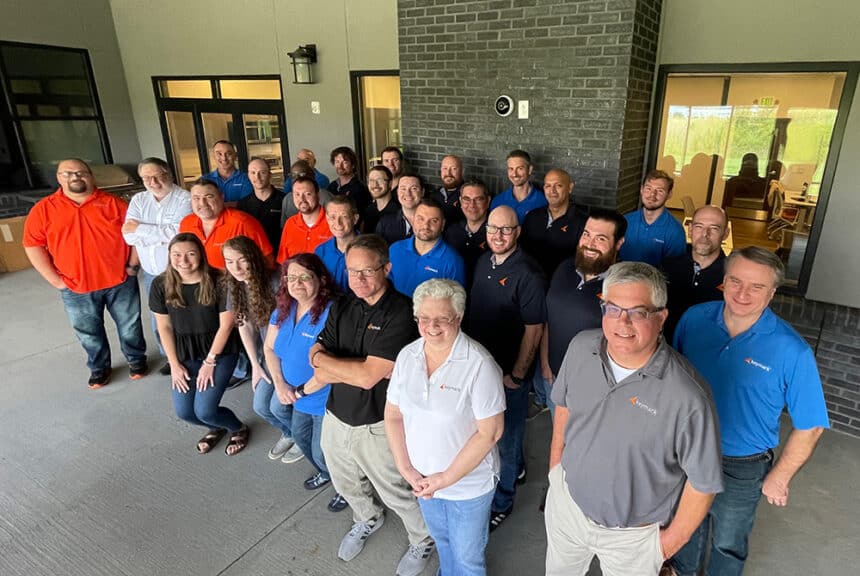Logistics is critical to our economy. It’s an industry that needs to operate like a well-oiled machine to ensure manufacturers have the materials they need to keep building and products reach the market in a timely manner. Yet about 32% of transportation and logistics companies still rely on manual-based tasks in over half of their processes. Robotic Process Automation (RPA) can help automate these repetitive tasks, whether it’s data entry or validation, tracking shipments, validating purchase orders or performing a number of other data-heavy processes.
The benefits of RPA for the logistics industry are clear: increased delivery speed, significantly lower costs and improved order accuracy. In fact, the question isn’t whether or not RPA will become a key part of successful logistics companies in the future — the question is which companies will adopt the technology first and create a considerable edge over their competition.
Here are seven ways RPA can help advance your logistics business:
1. Shipment Scheduling and Tracking
Most logistics companies leverage B2B or web portals to provide customers with visibility of inventory and shipping information. The problem is, many of these portals don’t link to the internal transportation management systems you use to schedule and track shipments. This leads to manually rekeying data between the systems which takes valuable time and opens up the possibility of increased errors.
With the implementation of RPA, instead of your Customer Service Representative (CSR) handling the transfer of information from web portals to internal systems and beyond, the process is handled automatically. Your CSRs are then freed up to handle more important customer service matters as your shipment scheduling and tracking hums along steadily in the background.
2. Order and Inventory Tracking
In order to expand business, many third-party logistics providers have agreements with dozens or even hundreds of carriers, payment processors and suppliers. But these relationships can significantly increase the manual data entry required to process and access the order and tracking information you need to supply to your customers.
For example, your personnel may need to access a provider’s system to capture shipment PRO numbers, track information, access bills of lading or retrieve invoices. This data would then need to be rekeyed into your system, as well as your customer’s system, to keep everything updated.
Once you add RPA into the mix, a software robot can automatically access the carrier’s systems to capture all necessary information and input it into your systems — with 100% accuracy and appropriate validations performed every step of the way. Suddenly, supplying your customers with the necessary tracking and order information is effortless and seamless.
3. Invoicing and Credit Collections
Many large 3PL carriers need to access hundreds of freight bill-payment portals to reconcile invoices. With RPA, you can automate the entire order-to-cash cycle by integrating your internal systems with your customers’ portals. An RPA bot can automatically extract shipping data and attach scanned PODs, invoices and other documents. Best of all, these transactions update to the customer portals in seconds — not hours or days. You’ll not only expedite invoicing, you’ll also ensure 100% accuracy and eliminate having to manually update B2B payment portals.
4. Supply and Demand Planning
For the companies who partner with logistics companies for fulfillment and shipping, having the ability to forecast your inventory needs is essential. But in order to successfully plan for supply and demand, you need to analyze vast amounts of data from various sources — internally, from suppliers or carriers, from customers and partners, and from the market at large.
With each set of data, there’s the possibility of errors in your calculations. Compiling the data also takes a considerable amount of time and resources. But with specifically programmed RPA bots, the data can be collected and calculated automatically. You now have an easily-obtained, properly organized and error-free set of data that contains exactly the information you need for accurate forecasting. RPA bots can even be programmed to detect trends and analyze historical numbers for more robust reports.
5. Purchase Order Management
From approvals to inventory assessments and reviews, a lot of manual input can go into PO management. Once RPA bots have been deployed, they can eliminate repetitive, time-consuming tasks such as transforming purchase requests into purchase orders and routing them for approval. RPA bots can also review purchase orders, looking for selected criteria or performing functions such as comparing the PO to the related invoice. They can then validate and route POs that conform to specified rules and flag any that don’t conform so they can be reviewed manually.
6. Freight Management
The end-goal for freight management is moving freight from the point of origin to the destination in the most efficient manner possible. Delivering goods on-time, in the correct quantities and at the lowest possible cost are all areas where RPA can help optimize your freight management. Tasks associated with planning optimization can be automated, as can appointment scheduling, load prioritization and consolidation, route optimization and freight accounting.
7. Returns and Refunds
If you process large amounts of returns and refunds by manual-based processes, you know how quickly your team can be overwhelmed by the amount of work involved. RPA can help automate these workflows and mitigate the demand on personnel. With the right amount of rule-based automation and strategic planning, you can bypass your team in many cases, accelerating returns and refunds and flagging those transactions that require human review and approval.
Stay Ahead in an Industry On the Move
RPA bots integrate with and enhance your existing Enterprise Resource Planning (ERP) systems and can perform cumbersome, repetitive and data-heavy tasks with complete accuracy. The transportation and logistics companies that leverage RPA technology effectively are the ones most likely to drive down costs, enhance profit margins and improve overall customer satisfaction.
By employing RPA, you benefit from immediate cost savings. According to the Institute for Robotic Process Automation, RPA saves companies 25% to 50% on the tasks it performs. And beyond cost-savings, your workforce is relieved of manual-intensive tasks which leaves them free to focus on higher-level initiatives such as planning or providing even better customer service.
We’ve shared just a fraction of the ways RPA can benefit your logistics company. If you’re ready to learn more about the benefits of RPA, we’ll help you identify exactly which processes are inhibiting efficiency at your organization and show you how we can automate those processes in ways that will yield tangible and long-lasting results. Contact us today for more information.



